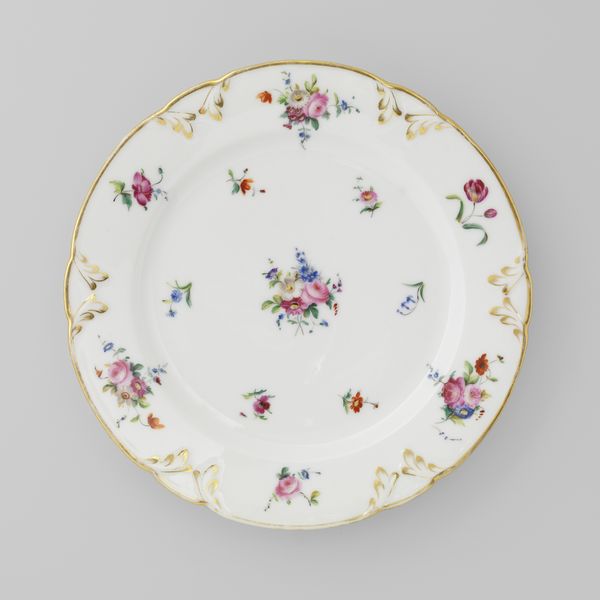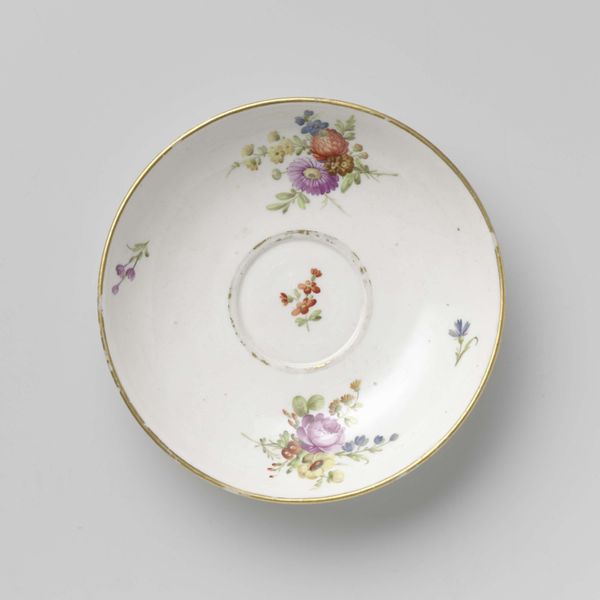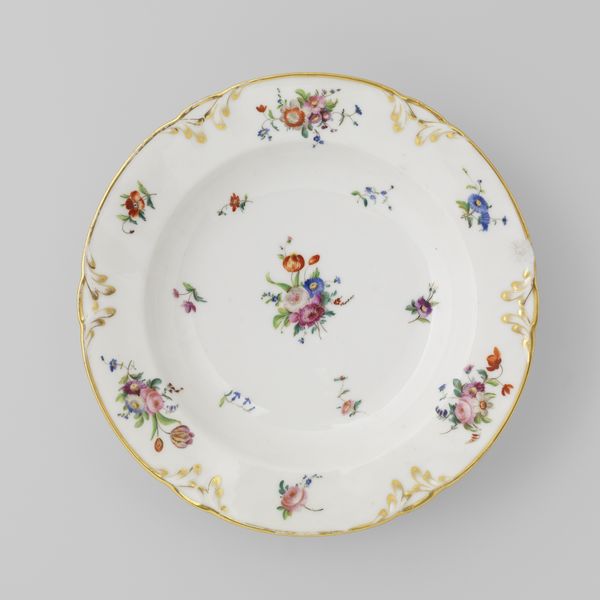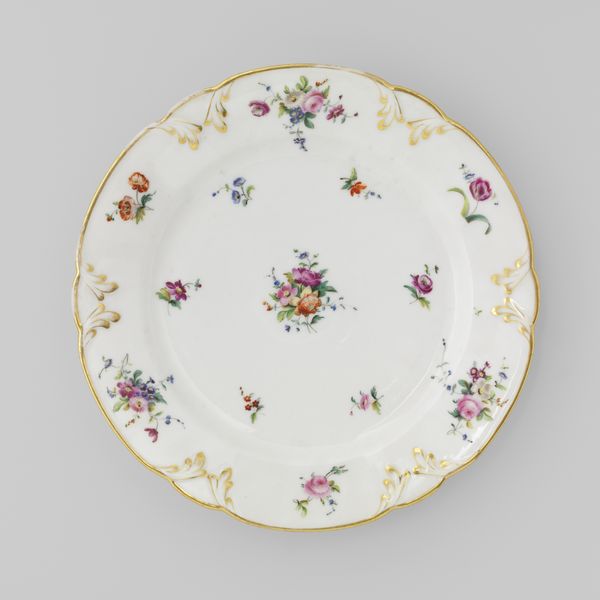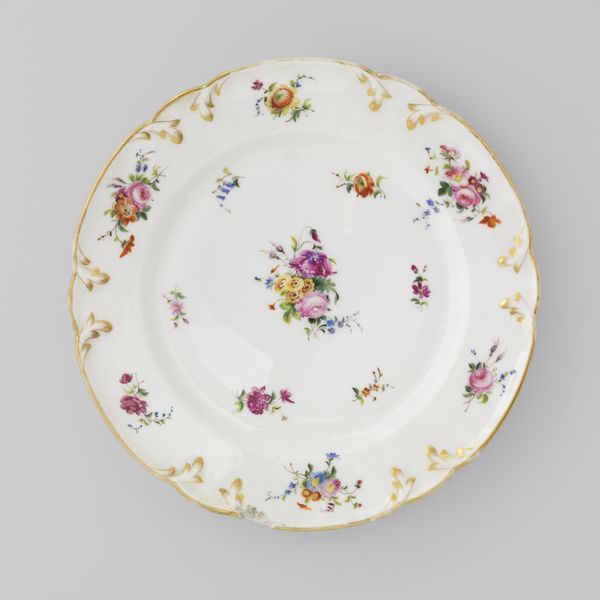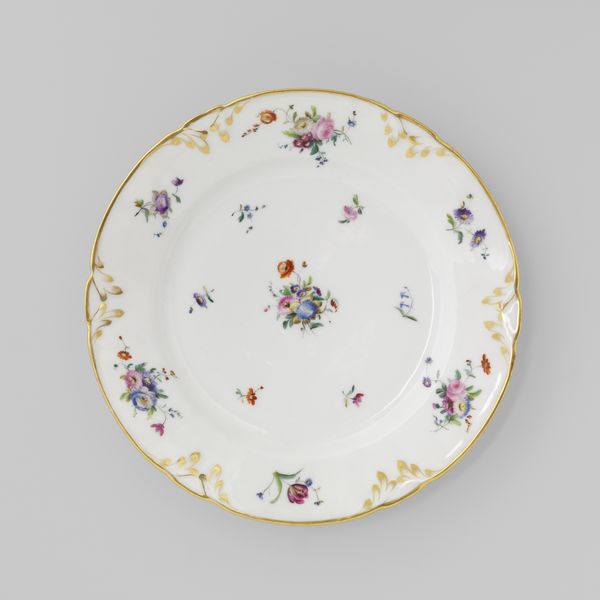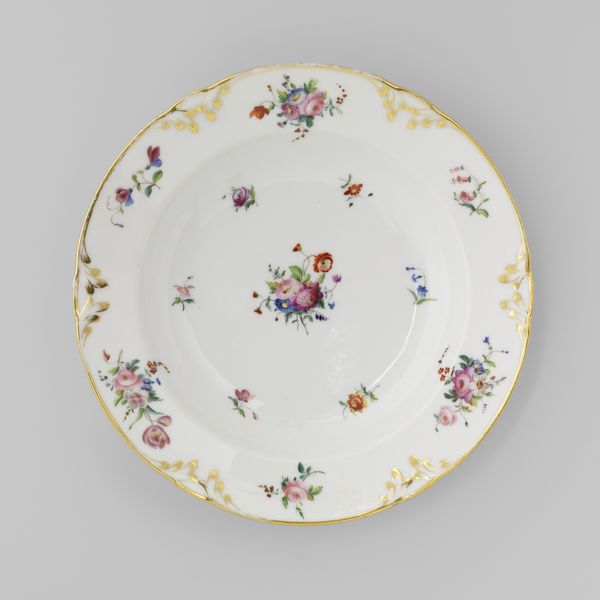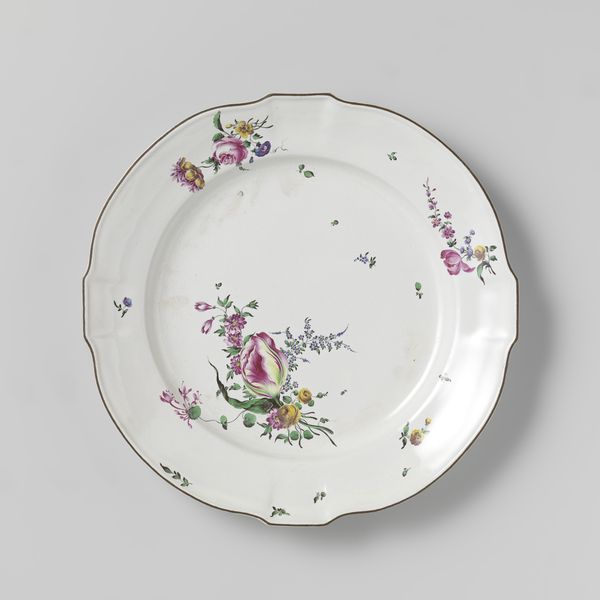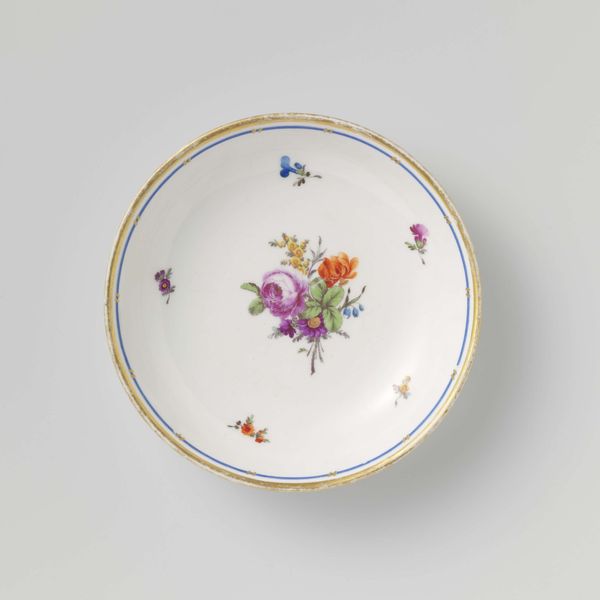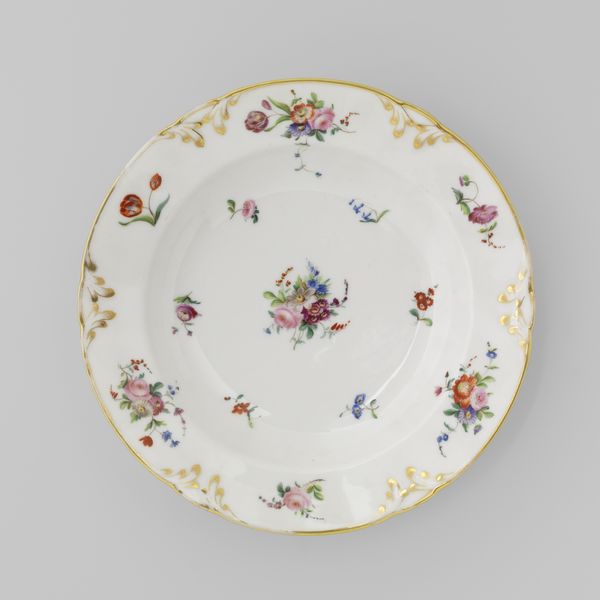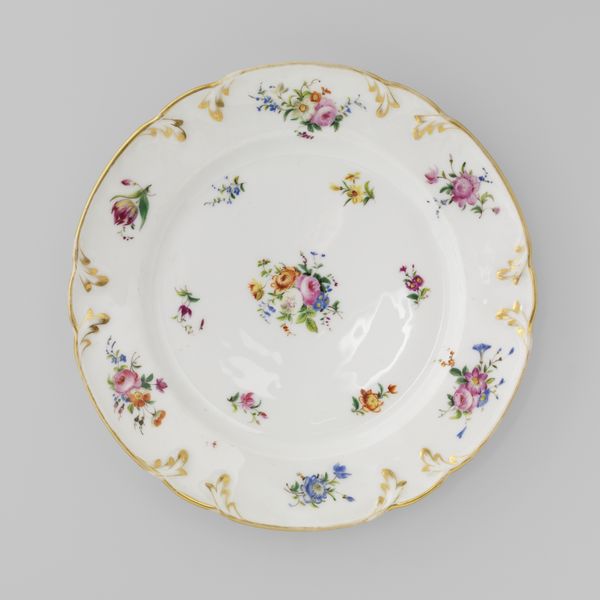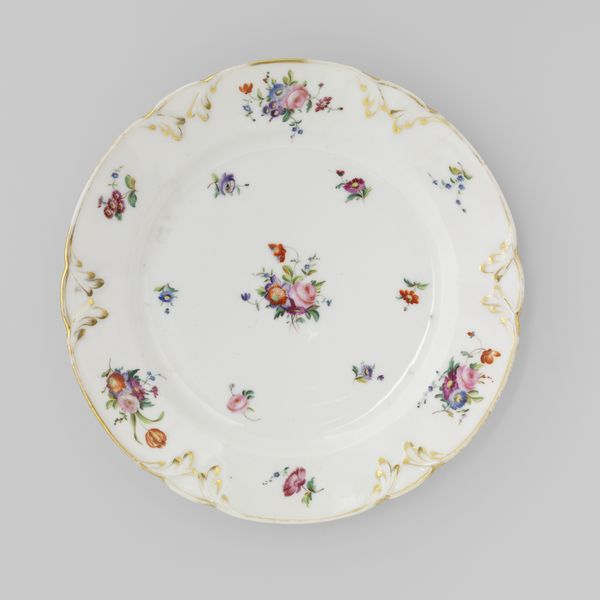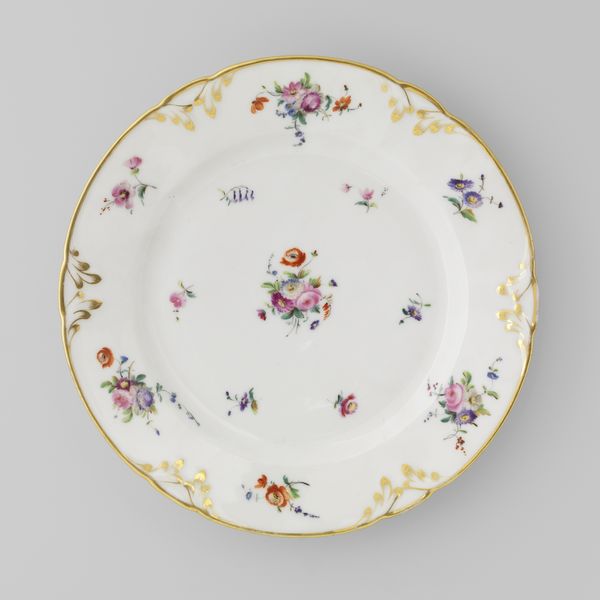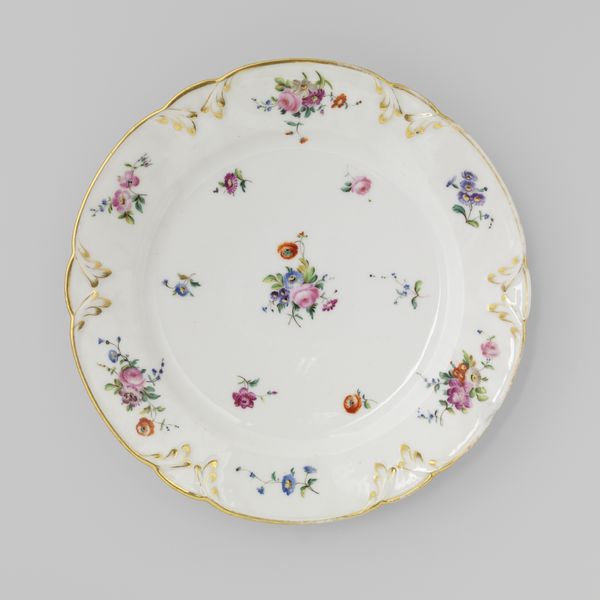
Dimensions: diameter 12.0 cm, height 2.9 cm
Copyright: Rijks Museum: Open Domain
Editor: Here we have a porcelain plate crafted in Loosdrecht, sometime between 1774 and 1784. It's currently housed at the Rijksmuseum. The delicate floral patterns feel very dainty. What strikes you most about it? Curator: It’s important to consider the porcelain itself – the specific type of clay used, where it was sourced. These ceramics were highly valued commodities, representing trade routes and colonial exploitation. Can we really separate the aesthetic from its material reality and the labor involved? Editor: So, the beauty is intertwined with a darker side? Curator: Absolutely. These weren't just objects of beauty. They were signifiers of wealth and status, reliant on specific technologies and a hierarchical social structure. How was this porcelain manufactured? Was it truly ‘Dutch’, or were the materials and methods influenced by other cultures? The painting itself – who painted these flowers, and what were their working conditions? Editor: That makes me consider the consumption, too. Who was actually eating off this plate and where did their wealth come from? Was it something people ate from daily or for show? Curator: Exactly! Consider the table it sat on, the food it held – all contributing to a complex social tableau. It's a story of global exchange, artistic skill, and social disparity. Each piece, including this delicate rendering of petals, reminds us to consider the relationship between beauty and labour. Editor: That completely changes how I view this seemingly simple porcelain plate! Thanks for shedding light on this historical dimension. Curator: Indeed. Material analysis can challenge the separation of art from daily life and bring awareness to how value is constructed around commodities and power structures.
Comments
No comments
Be the first to comment and join the conversation on the ultimate creative platform.
